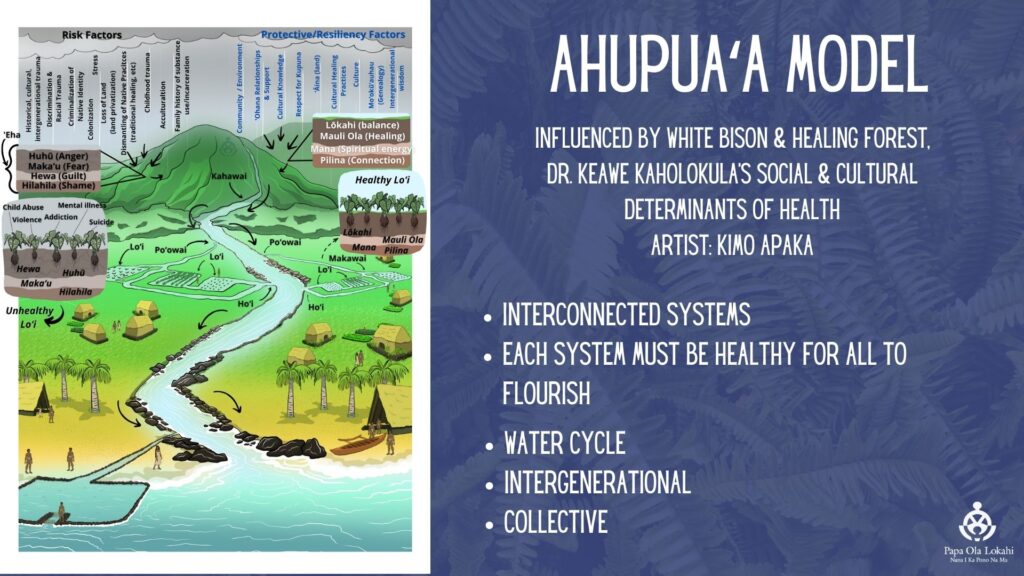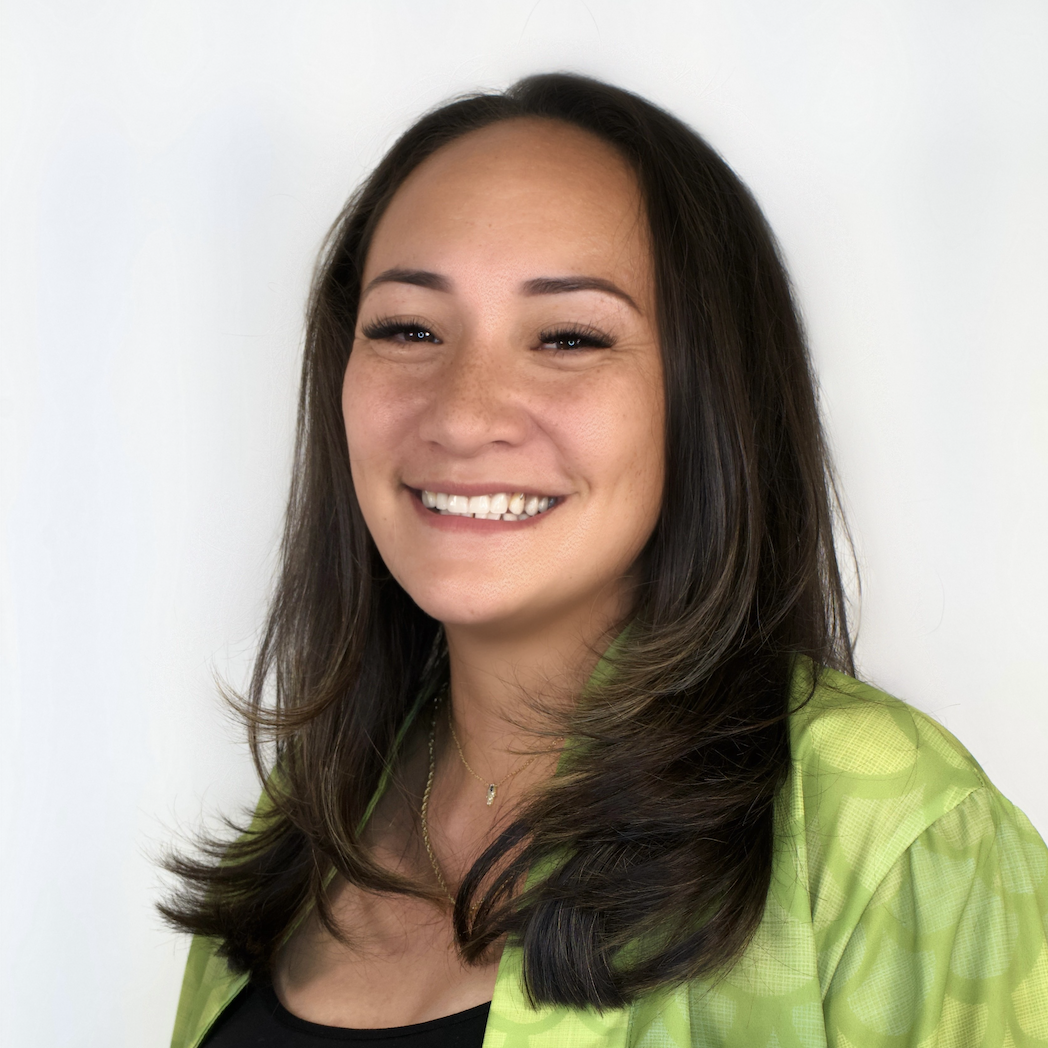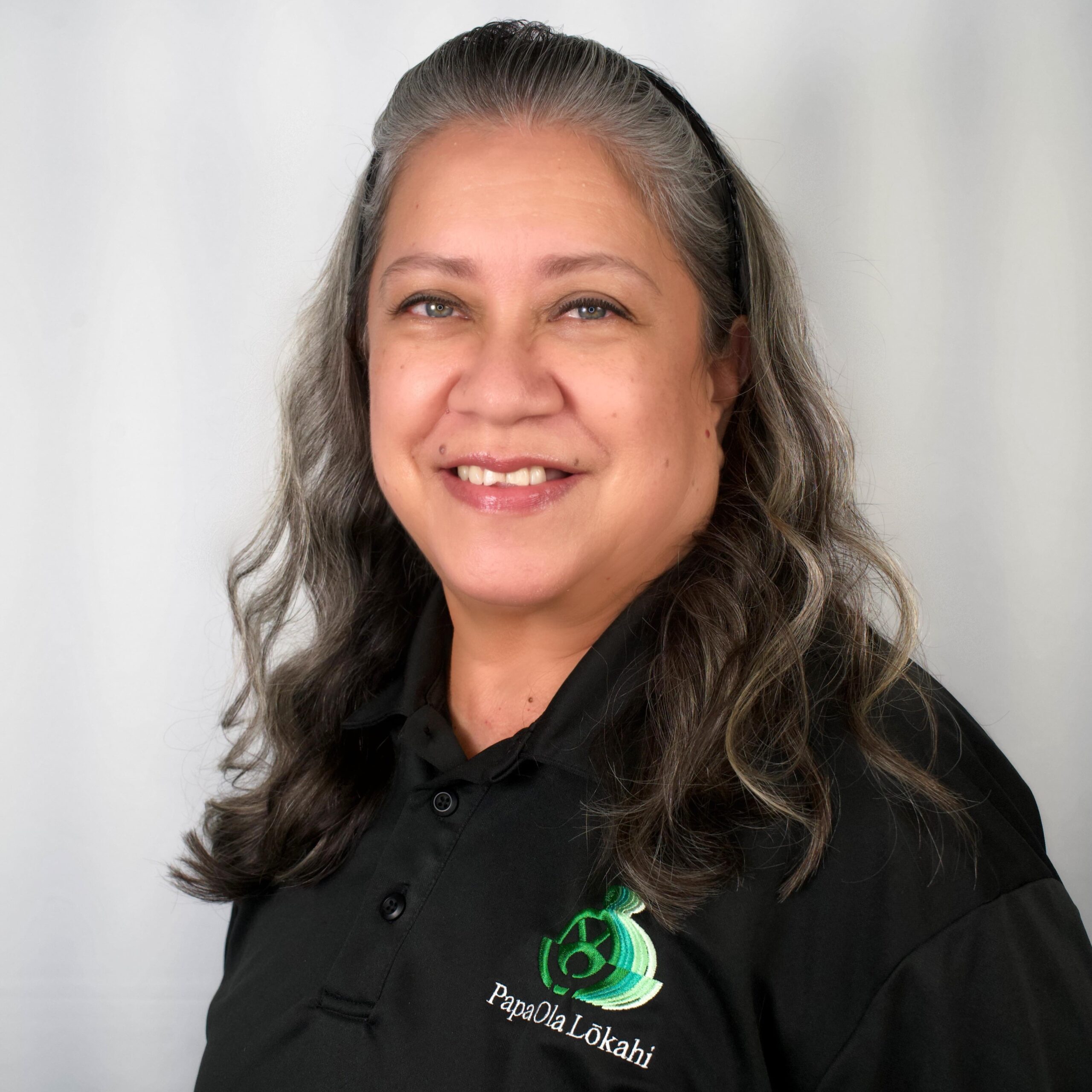The Ahupuaʻa model emphasizes relationship among people and the environment, identifying protective and risk factors, and promoting collective healing.

AHUPUAʻA
The Ahupuaʻa model emphasizes interconnectedness and recognizes historical and cultural traumas, promoting collective healing and resilience by increasing protective factors, and decreasing risk factors.
Native Hawaiians thrived in Hawaiʻi for centuries before Western contact, utilizing a sophisticated resource management system known as the ahupuaʻa. This system divided land into interconnected sections extending from the mountains to the sea, fostering a balanced relationship between people and the environment.
The ahupuaʻa model offers a way to implement cultural interventions that promote the collective healing for kānaka people, ʻohana families, and kaiaulu communities. These interventions aim to reduce the transmission of historical and cultural traumas while enhancing protective factors such as family connections, traditional knowledge, and respect for the land.
In ancient times, the health of systems like the loʻi, or taro patches, within the ahupuaʻa was crucial for sustenance. Similarly, today, understanding the impact of trauma on these systems is essential for healing.
Kalo, or taro, grown in the loʻi represents both physical sustenance and cultural identity, through kaʻao, our stories of Hāloanakalaukapalili, our ancestor and older brother who was stillborn and buried. From his body sprang the first kalo, that which sustained the Hawaiian people for generations. His younger brother, also named Hāloa in honor of his brother, became the ancestor of all the Hawaiian people. Through this story, we also learn of the genealogical connection of all Hawaiian people, to the birth of the islands, making us all relatives, the land, the animals, all inanimate and animate aspects of the world around us.
Unresolved trauma can affect the health of individuals and communities, manifesting in issues like substance use. The metaphor of the loʻi helps illustrate the importance of addressing root causes of trauma rather than just surface symptoms. By identifying and addressing these root causes, we can promote healing and resilience across generations through cultural reclamation.
Recognizing Native Hawaiians’ holistic worldview, which includes strong connections and reciprocal relationships between the land, community, and spirituality, is key to developing effective healing methods The ahupuaʻa model provides a framework for implementing these interventions or methods and fostering a thriving Native Hawaiian community.
By embracing a culturally grounded approach, we can empower and uplift our lāhui to reclaim and celebrate the unique cultural strengths that have kept our people healthy and thriving for generations, leading to more impactful and meaningful interventions for healing and growth.

Ahupuaʻa ~ a Model for Cultural Healing
Program Staff

Nāpua Casson-Fisher
she/her/ʻo ia
Director, Community Initiatives

Camille McComas
Program Specialist - Substance Use & Mental Health

Falahola Kanongataa
Program Specialist, ’Ohana CoE

Cathy Ferreira
she/her/ʻo ia
Administrative Support

Lilinoe Kauahikaua
she/her/ʻo ia
Program Coordinator - Substance Use & Mental Health

Kawehi Moderow
Population Health Specialist - Chronic Conditions

Kuaiwi Laka Kahiwakapu Pili I Haupapanui Makua
Population Health Specialist - Environmental Health, Nutrition & Oral Health

Ikaika Regidor
ʻoia/they/he
Education & Training Coordinator
Contact
Lilinoe Kauahikaua
(808) 597-6550
